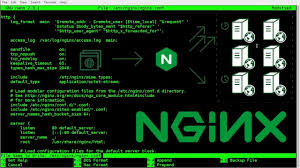
进程时间是指进程从创建到当前时刻所使用的CPU资源的总时间。为了记录和分析,内核将CPU时间(进程时间)分为以下两个部分:
-
用户CPU时间 :进程在用户空间(用户态)运行时所花费的CPU时间。有时也称为虚拟时间(virtual time)。
-
系统CPU时间 :进程在内核空间(内核态)运行时所花费的CPU时间。这是内核执行系统调用或代表进程执行其他任务(例如,处理页错误)所花费的时间。
通常,进程时间是指用户CPU时间和系统CPU时间的总和,即进程使用的总CPU时间。
提示:进程时间不等于程序的整个生命周期所消耗的时间。如果进程处于休眠状态(进程被挂起,不会得到系统调度),它不会使用CPU资源,因此休眠时间不计入进程时间。
在Linux系统中,获取进程时间的两种常用方法是使用times函数和clock函数。这些函数允许程序获取进程的CPU时间,以进行性能分析和优化。
times 函数:
-
用于获取进程及其子进程的用户和系统CPU时间。
-
返回从系统启动到调用时的时钟滴答数。
-
struct tms 结构用于存储具体时间信息。
clock 函数:
-
用于获取程序的用户和系统CPU时间。
-
返回从程序启动到调用时的时钟滴答数。
-
通过将返回值除以CLOCKS_PER_SEC可以得到秒数。
1
times函数
times函数用于获取当前进程及其子进程的CPU时间。
函数原型如下: * * *
#include <sys/times.h> clock_t times(struct tms *buf);
参数:
- buf:指向struct tms结构的指针,用于存储进程时间信息。
返回值:
-
返回从系统启动到调用times函数时的时钟滴答数(clock ticks)。
-
失败时返回(clock_t)-1,并设置errno来指示错误。
struct tms 结构: * * * * * *
struct tms { clock_t tms_utime; /* 用户CPU时间 */ clock_t tms_stime; /* 系统CPU时间 */ clock_t tms_cutime; /* 已终止的子进程的用户CPU时间 */ clock_t tms_cstime; /* 已终止的子进程的系统CPU时间 */};
示例如下: * * * * * * * * * * * * * * * * * * * * * * * * * * * * * * * *
#include <stdio.h>#include <sys/times.h>#include <unistd.h> int main() { struct tms t; clock_t start, end; start = times(&t); if (start == (clock_t)-1) { perror("times"); return 1; } // 模拟一些工作负载 for (volatile int i = 0; i < 100000000; i++); end = times(&t); if (end == (clock_t)-1) { perror("times"); return 1; } long ticks_per_second = sysconf(_SC_CLK_TCK); printf("User time: %lf seconds\n", (double)t.tms_utime / ticks_per_second); printf("System time: %lf seconds\n", (double)t.tms_stime / ticks_per_second); printf("Child user time: %lf seconds\n", (double)t.tms_cutime / ticks_per_second); printf("Child system time: %lf seconds\n", (double)t.tms_cstime / ticks_per_second); return 0;}
2
clock函数
clock函数用于获取程序的用户CPU时间。
函数原型如下: * * *
#include <time.h> clock_t clock(void);
返回值:
-
返回程序使用的用户和系统CPU时间的时钟滴答数(clock ticks)。
-
失败时返回(clock_t)-1,并设置errno来指示错误。
示例如下: * * * * * * * * * * * * * * * * * * * * * * * * * * * *
#include <stdio.h>#include <time.h> int main() { clock_t start, end; double cpu_time_used; start = clock(); if (start == (clock_t)-1) { perror("clock"); return 1; } // 模拟一些工作负载 for (volatile int i = 0; i < 100000000; i++); end = clock(); if (end == (clock_t)-1) { perror("clock"); return 1; } cpu_time_used = ((double) (end - start)) / CLOCKS_PER_SEC; printf("CPU time used: %f seconds\n", cpu_time_used); return 0;}
这两个函数在进行程序性能分析和调试时非常有用,可以帮助开发者了解程序的CPU时间消耗情况。
 51工具盒子
51工具盒子




